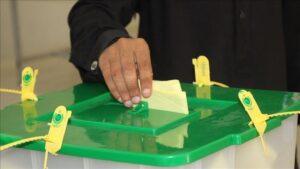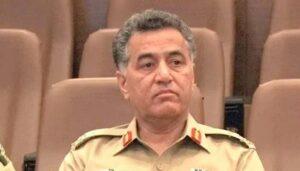PUBLISHED November 16, 2025
In 2012, Sanya* joined an institute to learn MS Office. When the teacher was giving a lecture, she noticed that the girl sitting next to her was writing furiously. His pen danced across the page like an Olympic sprinter on the track. “Wow, what fast English shorthand!” she thought. Later, curious to catch up on his missing notes, he asked to borrow his notebook.
What she saw scribbled on it surprised Sanya quite a bit. The pages were filled with what looked like English words, but none of them made any structural sense in English. Confused, she asked her partner: “What is this? What language have you written in?” With a casual smile, the girl responded: “Oh, I write in Roman Urdu.”
That moment hit Sanya like a twist in a drama. What she thought was impeccable English turned out to be Urdu in English letters. A practice now so common that even classrooms have become battlefields where Nastaliq is quietly losing to Roman writing.
Is this where our tragedy begins? Urdu is still alive, but its script seems to be finding its way. barely surviving.
Before we bury Urdu under Roman letters, let us remember what we are losing. Urdu is among the top ten most spoken languages in the world, with more than 230 million speakers in Pakistan, India, the Middle East, Europe and North America. It is the language of Faiz’s poetry, Ghalib’s wit, Iqbal’s philosophy and Manto’s rebellion. It carries the fragrance of Persian, the rhythm of Arabic and the sweetness of Hindi.
Globally, Urdu enjoys respect. Foreigners take courses in Urdu literature. European universities have chairs in Urdu. Bollywood songs sprinkle Urdu words because they sound classy and Indian poets like Gulzar and Javed Akhtar gloat about their Urdu skills. In fact, sometimes it seems that outsiders value Urdu more than we do. The irony? While a German might recite Iqbal with passion, a Pakistani student struggles to read a newspaper headline in Nastaliq.
Our relationship with Urdu, today, is as if we have the treasure, but we do not know its value.
What exactly is Roman Urdu?
Roman Urdu is when the Urdu stops wearing his fancy Nastaliq outfit and puts on some casual English jeans. Instead of “آنا”, we write “ana”. Instead of “آپ کیسے ہیں؟” we write “ap kese hain?” Instead of “میرا نام علی ہے”, we scribble “mera naam Ali hai”.
At first glance, Roman Urdu seems harmless. After all, it saves time. No need to switch keyboards or worry about fonts. Perfect for texting “kya kr rahe ho” at lightning speed. But behind this convenience lies a dangerous loss. Roman Urdu cannot capture the true sounds, flavors or beauty of Urdu.

How did Roman Urdu come in?
Let’s not blame WhatsApp for this mess. Roman Urdu has a long and dark history. In the 19th century, Christian missionaries used Roman letters to translate the Bible in India. Later, the British administration also experimented with Roman Urdu because learning Nastaliq was “too difficult.” Colonial laziness planted the first seeds.
However, the real explosion came in the 1990s and early 2000s. Mobile phones entered our lives. SMS was king. But guess what? No urdu keyboards. To save time, people started writing Urdu in English alphabets. “Kya kar rahe ho”, “main theek hoon”, “jaldi ao” and thus, Roman Urdu became the language of love, gossip and friendship.
He jumped to Orkut, Yahoo Messenger, MSN, Facebook and finally WhatsApp started when the need became an addiction. Today, Roman Urdu is everywhere: in social media comments, YouTube titles, advertisements, and even student assignments.

weak links
In all parts of the world, people and especially leaders wear their language like a crown. Indians? Bachan promotes Hindi as if he were reading sacred texts. Chinese? They don’t even bother to speak English. Their leaders speak Chinese in global forums. Iranians? Farsi flows from its officials like poetry, even at UN meetings.
And then in Pakistan, our leaders go on international platforms and suddenly transform into comedians with broken English. Because? Because deep down they think that Urdu is “backward”. Imagine! A language with centuries of literature, poetry and cultural depth, treated like a poor relation unwelcome at the table.
Now let’s go home. Where does the decline of Urdu really begin? Not in parliaments. Not even in the classrooms. It starts in the classrooms.
A mother says to her son, “Beta, kitab uthao.” The boy seems confused. She sighs and says: “Okay, reserve le aao.” English wins. Game over.
Today’s children know the names of dinosaurs, but they cannot pronounce “Urdu words”. Because? Because the parents themselves don’t care. Correct English? Essential. Correct Urdu? “Choro yaar, koun si naukri Urdu mein mile gi?”
There was a time when children slept listening to stories of Umro Ayyar, Tilism-e-Hoshruba and Dastan-e-Amir Hamza. Now they sleep with Peppa Pig and Baby Shark. Parents used to buy summaries, story books in Urdu or at least Taleem-o-Tarbiat. Today is YouTube Kids on autoplay.
Furthermore, teachers confirm the damage and their words hurt. “Earlier, students could read Iqbal and Ghalib fluently,” says an Urdu teacher in Islamabad. “Now? They can’t even finish a newspaper headline without tripping.” Another teacher from Karachi shakes her head: “The exams are full of hybrid language. Students write: Pakistan ka bright future hai. I don’t know whether to laugh, cry or hand them an Oxford dictionary.”
“Some students don’t even bother writing the script anymore. They write entire assignments in Roman Urdu and present them with pride!” says a teacher in Karachi. “Imagine a final year thesis in which you read: Pakistan ki economy down hai because corruption zyada hai. That is not a research paper. It is a WhatsApp group chat with missing references.”
Another Urdu teacher in Peshawar adds in frustration: “When we ask them to write an essay, they open Google Translate. When we ask them to recite poetry, they ask us if there is an audio version. When we assign them a reading in Urdu, they ask us if there is a copy in Roman. It is no longer weakness, it is dependency.”
But what surprises the teachers most is the attitude. Instead of being ashamed of their weak Urdu, many students flaunt it. “They actually say, ‘Sir, what is the future of Urdu? English hi Future hai.'” “They wear their ignorance like a badge of honor.” laments a teacher from Peshawar. Another comment with bitter humor: “At this rate, the next generation will not apologize for not knowing Urdu; they will celebrate it on their CVs: Skills: Roman typing, fluency with emojis, no Urdu required.”

PTV Pure Urdu
PTV was like a learning corner for Urdu. The presenters spoke so perfectly that families even forced their children to sit until 9 p.m. Khabarnama. Not because of the news. Nobody cared about wheat production or the visits of ministers. They watched to learn the pronunciation, polish the accents, feel the rhythm of Urdu.
Then there was Neelam Ghar. Tariq Aziz. A man who could make even the most ordinary things seem poetic. His legendary opening line “دیکھتی آنکھوں، سنتے کانوں، آپ کو طارق عزیز کا سلام” was not just an introduction; It was a master class in Urdu. Every crisp word. Every syllable shone. Not only did you gain a water cooler, but you also gained respect for Urdu.
Kasauti, quiz time, The debates, the mushairas, were places where Urdu showed its strength. Students from schools and universities took to the stage, giving speeches, reciting poetry and competing in wits. Even dramas taught language.
Today private channels arrived like noisy relatives. Urdu was sidelined and replaced by “Breaking News”, live updates and talk shows. The presenters mix English, Urdu and drama, turning news into theatre. “Dekhiye, basically, is a political scenario waqt jo hai na, kind of a game changer hai.” Urdu?
And don’t even get me started on the dramas. “Tum mere liye coffee laaogi ya main khud order karun?” Urdu stands crying in a corner. Thanks to the influence of Bollywood, we now hear idioms that don’t even belong here. You think you’re watching Pakistani TV, but it sounds like a dubbed Indian series. “Aisay thorri na hota hai!!”
Finally the big corporations realized: pure Urdu does not sell. Catchy hybrid slogans do. Then they gave us gems like:
Dil Maange More, Mana lo freshness ka maza, Clear hai, zona mein aa, aza Aesa Dil Dance Maray, no more haddi! How will young people learn that haddi begins with hai waali hay, and not with hall wali hay, nor with chashmi hay? The Urdu alphabet is dying!
The dominance of Roman Urdu has given rise to a generation that finds it easier to send text messages in the English alphabet, despite the availability of global keyboards, than to read or write in their own script. This change may seem convenient, but it has consequences: students are losing their ability to interact with classical literature, understand academic texts, or even write correctly in Urdu. The beauty of language, expressed through calligraphy, poetry and literature, is being diluted into a simple form that lacks depth and precision. Roman Urdu dominates because it is fast, used largely digitally, and does not require a special keyboard, but this ease comes at the cost of weakening cultural identity. If the trend continues, the gap between spoken familiarity and written incompetence will only grow, leaving Urdu as a language that people can speak but cannot read or write.
The rise of Roman Urdu is not just a harmless shortcut; It’s slow-moving cultural poison packaged as convenience. Publicity made sure the damage persisted. Brand slogans have warped our sense of grammar, so when commercials reduce a national language to hybrid slogans, should we really be surprised that students now struggle to write a single page in Urdu without hesitation? They can swipe emojis and scroll through TikTok in seconds, but put a notebook in front of them and suddenly Urdu feels like rocket science.
This is not modernization; It is laziness disguised as progress. Imagine handing over Iqbal’s poetry to the next generation, only to be asked if there is a Roman script version on Google. Around the world, nations treasure their languages, while we auction ours off for ratings, mottos, and autocorrect. If we don’t stop now, the Urdu obituary won’t be in elegant Nastaliq, but will be written in clumsy Roman, probably with a laughing emoji at the end.
The choice is simple but urgent: either reclaim our pride in Urdu through schools, media and homes, or accept that WhatsApp slang will be the cultural legacy we leave behind. I hate to say it, but it looks like Urdu’s funeral will be in Roman script (with LOL at the end)!
Rabia Khan is a writer covering social issues, literature and cultural values of Pakistan. You can contact her at [email protected].
All facts and information are the sole responsibility of the writer.



